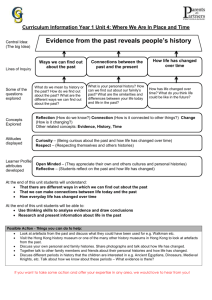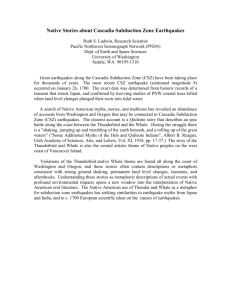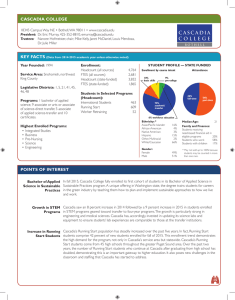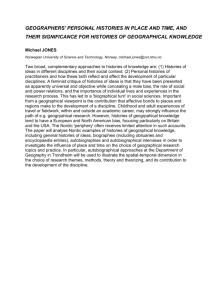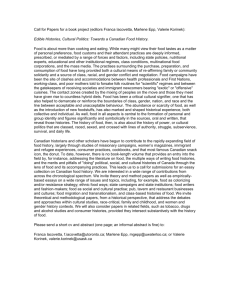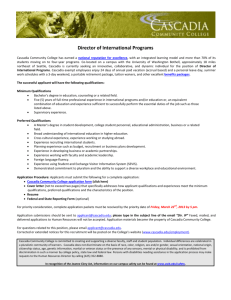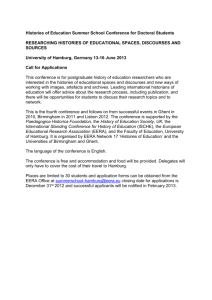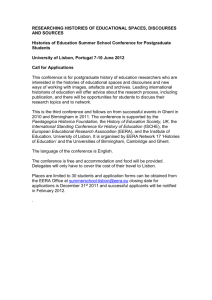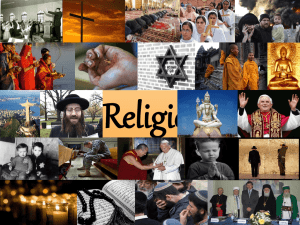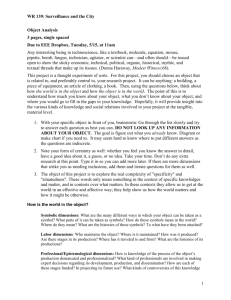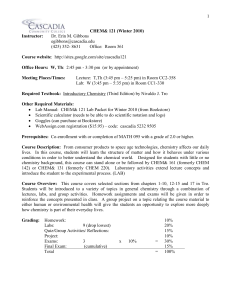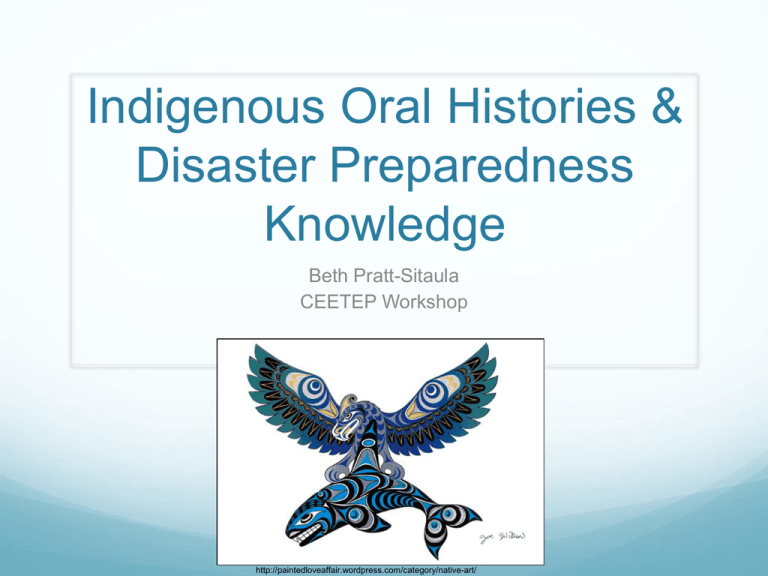
Indigenous Oral Histories &
Disaster Preparedness
Knowledge
Beth Pratt-Sitaula
CEETEP Workshop
http://paintedloveaffair.wordpress.com/category/native-art/
Insert Thunderbird & Killerwhale video
Coastal Cascadia Oral Histories
Source locations of accounts of earthquake-tsunami stories.
Recorded 1860-1964. (Ludwin et al 2005)
Coastal Cascadia Oral Histories
Tree-ring & Japanese-record estimated event
time of January 26 1700, 9 pm
Oral-history-estimated event time of 1690 AD
Run to High Ground
Langi village, Simeulue Island,
Indian Ocean
Account by tsunami
geologist, Lori Dengler
of Cal State Humboldt
Thoughts & ideas
Mythic stories: Timeless/long-term region-wide stories
that describe a restless earth and ocean
Oral histories: Accounts that record specific event/s
(sometimes centuries-old)
Preparedness: Strong advice on how to live more
safely in a geologically active region
Thoughts & ideas
Stories and histories in many cases belong to the teller.
Consideration and respect should be exercised in
repeating stories.
Native American cultures are very grounded in Place.
Ex. “These lands are vital not only to our subsistence but
also to our sense of being as Tlingit people.” (Gabriel
George, 2008)
Attributes of indigenous ways of knowing nature: placebased, non/material world are one, relational,
mysterious (all is not knowable), observational not
experimentational, cyclical time.
References
Ainkenhead G. and Michell, H., 2011, Bridging cultures: Indigenous and scientific
ways of knowing nature. Pearson. pp 196.
Coyote Mentoring, Wilderness Awareness School. Accessed October 13,
2013http://wildernessawareness.org/program/coyote-mentoring/
Dengler, L., 2011, My Word: Surviving by learning from experience. Times-Standard,
Eureka, CA (March 26).
Losey, R. J., 2005, Earthquakes and tsunami as elements of environmental disturbance on the
Northwest Coast of North America. Journal of Anthropological Archaeology, v 24, p 101-116.
Losey, R. J., 2000, Oral tradition of earthquakes and tsunamis on the Central Cascadia Coast:
Variation of account and relations to historically observed patterns across the Northwest Coast.
Proceedings of the Fourth Annual Coquille Cultural Preservation Conference, p 1-15.
Ludwin R. S. et. al., 2005, Dating the 1700 Cascadia earthquake: Great coastal earthquakes in Native
stories. Seismological Research Letters, v 76, n 2, p 140-148.
McMillan, A. D. and Hutchinson, I., 2002, When the mountain dwarfs danced: Aboriginal traditions of
paleoseismic events along the Cascadia Subduction Zone of Western North America. Ethnohistory, v
49, n 1, p 41-68.
Phillips, P. W, 2007, Tsunamis and floods in Coos Bay mythology. Oregon Historical Quarterly, v 108, n
2, p 181-192. http://www.ohs.org/research/quarterly/Summer-2007.cfm
Semken, S, et. al., 2009, Factors that influence sense of place as a learning outcome
and assessment measures of place-based geoscience teaching. Electronic Journal of
Science Education, v 13, n 2, p 136-159.
Semken, S., & Butler Freeman, C., 2008, Sense of place in the practice and
assessment of place-based science teaching. Science Education, V 92, v 1042-1057.
Thorton, T. F., 2008, Being and Place Among the Tlingit. UW Press. pp 247.
How would you use oral histories
and native stories with your
learners?

